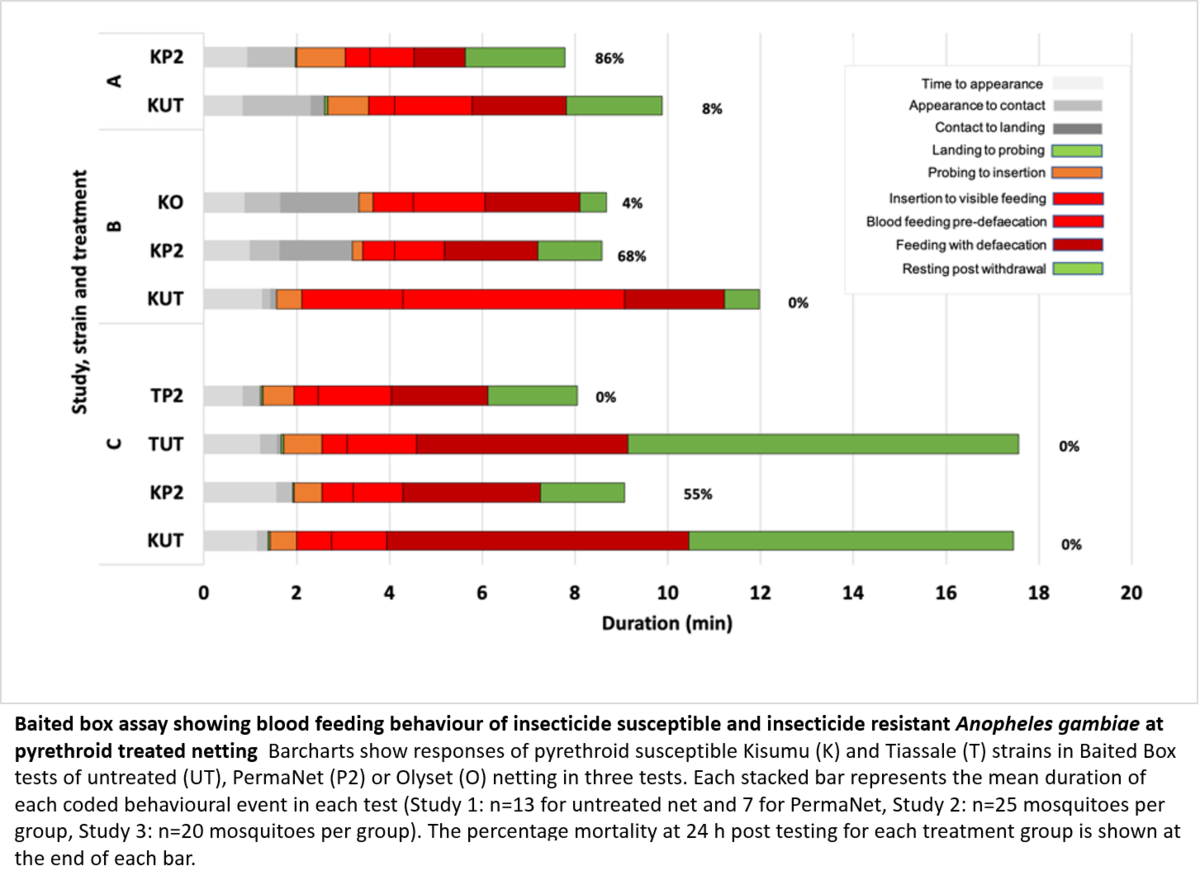The baited box is designed to investigate late-stage host-seeking at the mosquito-net interface. A 10cm x 10cm x 10cm box forms the test arena into which individual mosquitoes are released.
The person carrying out the test also acts as the source of host attractants by placing either a finger or a forearm against a 2.5cm diameter aperture in the box that holds a piece of test netting. The mosquito can approach the net and take a blood meal, or if the treatment on the net is either repellent or irritant, the mosquito might take an incomplete blood meal or may be repelled or so irritated by contact with the net treatment that the blood meal is either avoided or finished quickly.
The baited box is also be used to simulate conditions in which a person is sleeping under an intact bed net where the mosquito can approach but not bite. In this version, a barrier is placed between the host finger or forearm and the test net, allowing the attractant odours to permeate through the box but stopping the mosquito from feeding.
The test is filmed in the dark, using infra-red cameras, to recreate as closely as possible the conditions in which Anopheles sp. mosquitoes feed from humans.
Using the baited box, we can investigate:
- Individual mosquito responses to insecticide-treated nets
- Total net contact per mosquito
- Time taken to approach and begin feeding from the host
- Duration of blood meal
- Effects on host-seeking persistence
- Willingness to remain in contact with the treated material once the blood meal is complete.
Complete video recording of a Baited box assay. A single female Anopheles gambiae (pyrethroid resistant Tiassale strain) feeding on a human hand through insecticide treated netting (PermaNet 2.0). The video is the complete unedited recording and plays at natural speed. The timepoints that mark the start or finish of key behavioural events are labelled in the video. See Hughes et al 2020 (above, right) for full description.

See Hughes et al
